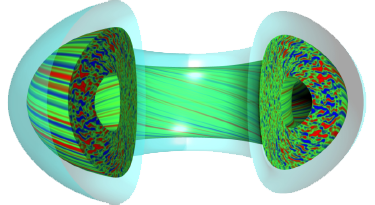Speaker
Description
The general model of learning from data assumes that the examples are drawn independently from a fixed but unknown probability distribution function (PDF). In any system that generates a continuous data flow (data streaming setting), the PDF may change as the data are streaming. It is important to note that the new PDF is also unknown. Such changes in the data may convey interesting time-dependent information and knowledge and, in general, the changes can be seen as anomalies in the system evolution. There are methods that detect the changes in the data although the exact form of the PDFs remains unknown. The recognition of anomalies is used in the article to find common patterns in the termination phase of disruptive discharges. Two different techniques for anomaly detection are used: exchangeability test and unsupervised event detection and classification. Once anomalies are determined, the temporal segments between consecutive anomalies are classified in an unsupervised way and the different classes, obtained in the classification process, define the common patterns. The temporal evolution of the patterns close to the disruption will allow distinguishing the types of disruptions. The detection of anomalies has been applied to 78 disruptive discharges of JET corresponding to the C38 campaign. The discharges belong to shots of both the ITER baseline scenario (53 shots) and the ITER hybrid scenario (25 shots). The discharges are analysed from plasma breakdown to plasma extinction, looking for anomalies. Of course, not all anomalies are related to disruptions (for example switch on/off of plasma heating, gas puffing or changes in radiation patterns). Criteria have been established to identify anomalies related to disruptions. The two techniques mentioned above, which are founded on completely different mathematical principles, provide similar results in parameter spaces of dimension 22 (datasets of 22 plasma quantities). Both techniques require the optimisation of several parameters that will be discussed together with the common patterns found (about 5).
| Country or International Organisation | Spain |
|---|---|
| Affiliation | CIEMAT |

